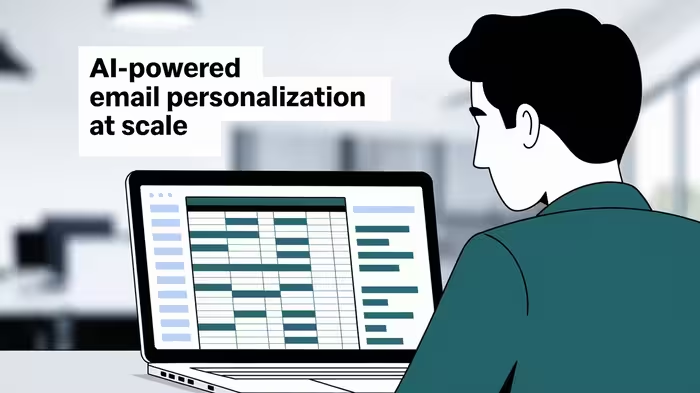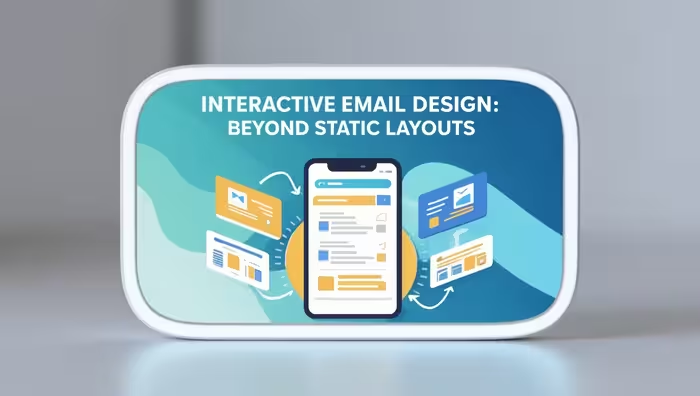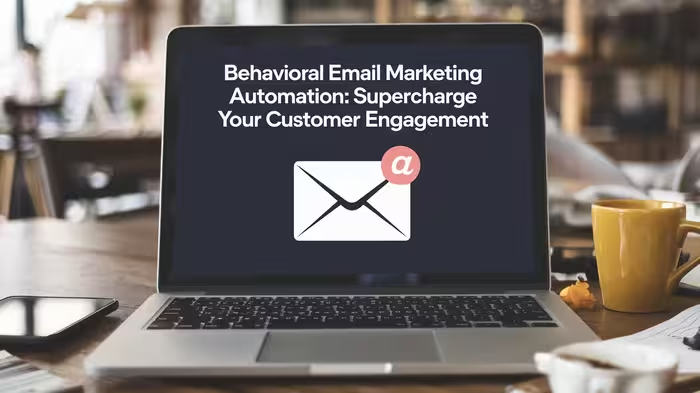In today’s digital age, email marketing remains a cornerstone of effective customer communication. However, with inboxes overflowing and attention spans shrinking, marketers face an uphill battle in capturing their audience’s interest.
Enter AI-powered email personalization – a game-changing approach that’s revolutionizing how businesses connect with their customers at scale. In this comprehensive guide, we’ll explore the ins and outs of AI-driven email personalization, its benefits, implementation strategies, and future trends.
Understanding AI-Powered Email Personalization
Definition and Core Concepts
AI-powered email personalization refers to the use of artificial intelligence and machine learning algorithms to tailor email content, timing, and delivery to individual recipients based on their preferences, behaviors, and characteristics.
This advanced approach goes far beyond simple mail merge techniques, allowing marketers to create highly relevant, engaging, and timely email campaigns that resonate with each subscriber on a personal level.
How AI Enhances Email Marketing
Traditional email marketing often relies on broad segmentation and manual rules to achieve a semblance of personalization. AI takes this to the next level by analyzing vast amounts of data in real-time, identifying patterns and insights that humans might miss. This enables marketers to:
- Predict customer preferences and behaviors with greater accuracy
- Automate complex decision-making processes for content selection
- Optimize email send times for maximum engagement
- Continuously learn and improve from recipient interactions
Benefits of AI-Powered Personalization
The advantages of incorporating AI into your email personalization strategy are numerous:
- Increased open rates and click-through rates
- Higher conversion rates and ROI
- Improved customer engagement and loyalty
- Time and resource savings for marketing teams
- Scalability of personalization efforts across large subscriber bases
Key Technologies Behind AI Email Personalization
To truly appreciate the power of AI in email marketing, it’s essential to understand the underlying technologies that make it possible.
Machine Learning Algorithms
At the heart of AI-powered email personalization are sophisticated machine learning algorithms. These algorithms analyze historical data, user interactions, and other relevant information to make predictions about future behavior. Some common types of machine learning algorithms used in email personalization include:
- Collaborative filtering: Recommends content based on similar users’ preferences
- Decision trees: Helps in segmenting users and making content decisions
- Neural networks: Enables complex pattern recognition for advanced personalization
Natural Language Processing (NLP)
NLP allows AI systems to understand and generate human-like text. In email personalization, NLP is crucial for:
- Analyzing email content and subject lines
- Generating personalized copy and recommendations
- Understanding user sentiment from previous interactions
Predictive Analytics
Predictive analytics uses historical data to forecast future outcomes. In the context of email marketing, it helps in:
- Predicting the best time to send emails to individual subscribers
- Estimating the likelihood of a user engaging with specific content
- Forecasting customer lifetime value and churn risk
Implementing AI-Powered Email Personalization
Now that we’ve covered the foundational aspects, let’s dive into the practical steps of implementing AI-powered email personalization in your marketing strategy.
Data Collection and Integration
The first and most crucial step in AI-powered personalization is gathering and integrating relevant data. This includes:
- Demographic information
- Past purchase history
- Website browsing behavior
- Email engagement metrics
- Social media interactions
To make the most of AI personalization, it’s essential to create a unified customer profile that aggregates data from various sources. This may involve integrating your CRM, e-commerce platform, and marketing automation tools.
Segmentation and Audience Targeting
While AI allows for individual-level personalization, effective segmentation remains important for creating overarching strategies. AI can help refine your segmentation by:
- Identifying micro-segments based on subtle behavioral patterns
- Dynamically updating segment membership as user behavior changes
- Creating lookalike audiences for prospecting and acquisition
Content Optimization
AI excels at optimizing email content for maximum engagement. This includes:
- Personalizing subject lines and preheaders
- Selecting the most relevant images and product recommendations
- Adjusting the tone and style of copy to match individual preferences
- Optimizing call-to-action (CTA) buttons and placement
Send Time Optimization
Timing is crucial in email marketing, and AI can determine the optimal send time for each recipient based on their past engagement patterns. This ensures your emails land in inboxes when subscribers are most likely to read and act on them.
Personalization Techniques Using AI
Let’s explore some specific personalization techniques that leverage the power of AI.
Dynamic Content Insertion
AI can automatically insert personalized content blocks into email templates based on individual user data. This might include:
- Product recommendations tailored to browsing and purchase history
- Location-specific offers and information
- Personalized greetings and references to past interactions
Subject Line Optimization
AI-powered tools can generate and test multiple subject lines, predicting which ones are likely to perform best for different segments or individuals. This can significantly boost open rates and overall campaign performance.
Product Recommendations
By analyzing user behavior and preferences, AI can suggest products or content that are most likely to interest each recipient. This can be particularly powerful for e-commerce businesses looking to increase cross-selling and upselling opportunities.
Behavioral Triggers
AI can identify specific user behaviors that warrant targeted email responses. For example:
- Sending a personalized discount code to a user who has abandoned their shopping cart
- Recommending complementary products after a purchase
- Re-engaging dormant subscribers with tailored content
Overcoming Challenges in AI-Powered Email Personalization
While the benefits are clear, implementing AI-powered personalization does come with its challenges.
Data Privacy and Compliance
With regulations like GDPR and CCPA in place, it’s crucial to ensure that your AI-powered personalization efforts comply with data protection laws. This includes:
- Obtaining proper consent for data collection and use
- Implementing data anonymization techniques
- Providing transparency about how AI is used in personalization
Integration with Existing Systems
Incorporating AI into your existing marketing stack can be complex. It’s important to:
- Ensure compatibility with your current email service provider
- Develop a plan for data migration and integration
- Train your team on new AI-powered tools and workflows
Maintaining the Human Touch
While AI can dramatically improve personalization, it’s essential to maintain a human element in your communications. Strive for a balance between automation and authentic, human-crafted content to build genuine connections with your audience.
Measuring Success and ROI
To justify the investment in AI-powered email personalization, it’s crucial to track and measure its impact on your marketing efforts.
Key Performance Indicators (KPIs)
Some important metrics to monitor include:
- Open rates and click-through rates
- Conversion rates and revenue per email
- Customer lifetime value
- Unsubscribe rates and spam complaints
A/B Testing and Optimization
Continuously test different aspects of your AI-powered campaigns, such as:
- Subject line variations
- Content personalization strategies
- Send time algorithms
Use the insights gained from these tests to refine your approach and improve performance over time.
Attribution Modeling
Implement robust attribution modeling to understand how AI-powered email personalization contributes to your overall marketing success. This will help you allocate resources effectively and demonstrate the ROI of your AI investments.
Future Trends in AI-Powered Email Personalization
As technology continues to evolve, so too will the capabilities of AI in email marketing. Here are some trends to watch:
Advanced Predictive Modeling
Future AI systems will be able to predict customer needs and preferences with even greater accuracy, allowing for proactive personalization that anticipates user desires before they’re expressed.
Hyper-Personalization
As AI becomes more sophisticated, we’ll see a shift towards hyper-personalization, where every aspect of an email – from design to content to delivery – is tailored to the individual recipient.
Integration with Other Marketing Channels
AI-powered personalization will extend beyond email, creating seamless, personalized experiences across all customer touchpoints, including social media, websites, and mobile apps.
Conclusion
AI-powered email personalization represents a significant leap forward in marketing technology, enabling businesses to connect with their audiences in more meaningful and effective ways than ever before.
By leveraging machine learning, natural language processing, and predictive analytics, marketers can create highly targeted, relevant, and timely email campaigns that drive engagement and conversions at scale.
As you embark on your AI-powered personalization journey, remember that success lies in striking the right balance between automation and human creativity. Use AI as a powerful tool to augment your marketing efforts, but never lose sight of the human element that builds genuine connections with your customers.
The future of email marketing is personal, and AI is the key to unlocking its full potential. Embrace this technology, stay adaptable, and watch as your email campaigns transform into powerful drivers of business growth and customer loyalty.
FAQs
- What is the difference between traditional email personalization and AI-powered personalization?
Traditional personalization often relies on basic segmentation and rules-based approaches, while AI-powered personalization uses machine learning algorithms to analyze vast amounts of data and make real-time decisions about content, timing, and delivery for each individual recipient. - How does AI-powered email personalization impact data privacy concerns?
While AI requires access to user data to function effectively, it’s crucial to implement robust data protection measures and comply with regulations like GDPR and CCPA. This includes obtaining proper consent, anonymizing data where possible, and being transparent about data usage. - Can small businesses benefit from AI-powered email personalization?
Absolutely! While the initial investment might be higher, many AI-powered email marketing tools are becoming more accessible to small businesses. The improved engagement and conversion rates can often justify the cost, even for smaller operations. - How long does it take to see results from implementing AI-powered email personalization?
The timeline can vary depending on factors such as the quality and quantity of your data, the complexity of your implementation, and your specific goals. However, many businesses start seeing improvements in key metrics within a few months of implementation. - Will AI completely replace human marketers in email campaign creation?
No, AI is not likely to replace human marketers entirely. Instead, it will augment their capabilities, handling data analysis and decision-making at scale while allowing human marketers to focus on strategy, creativity, and building authentic connections with customers.


